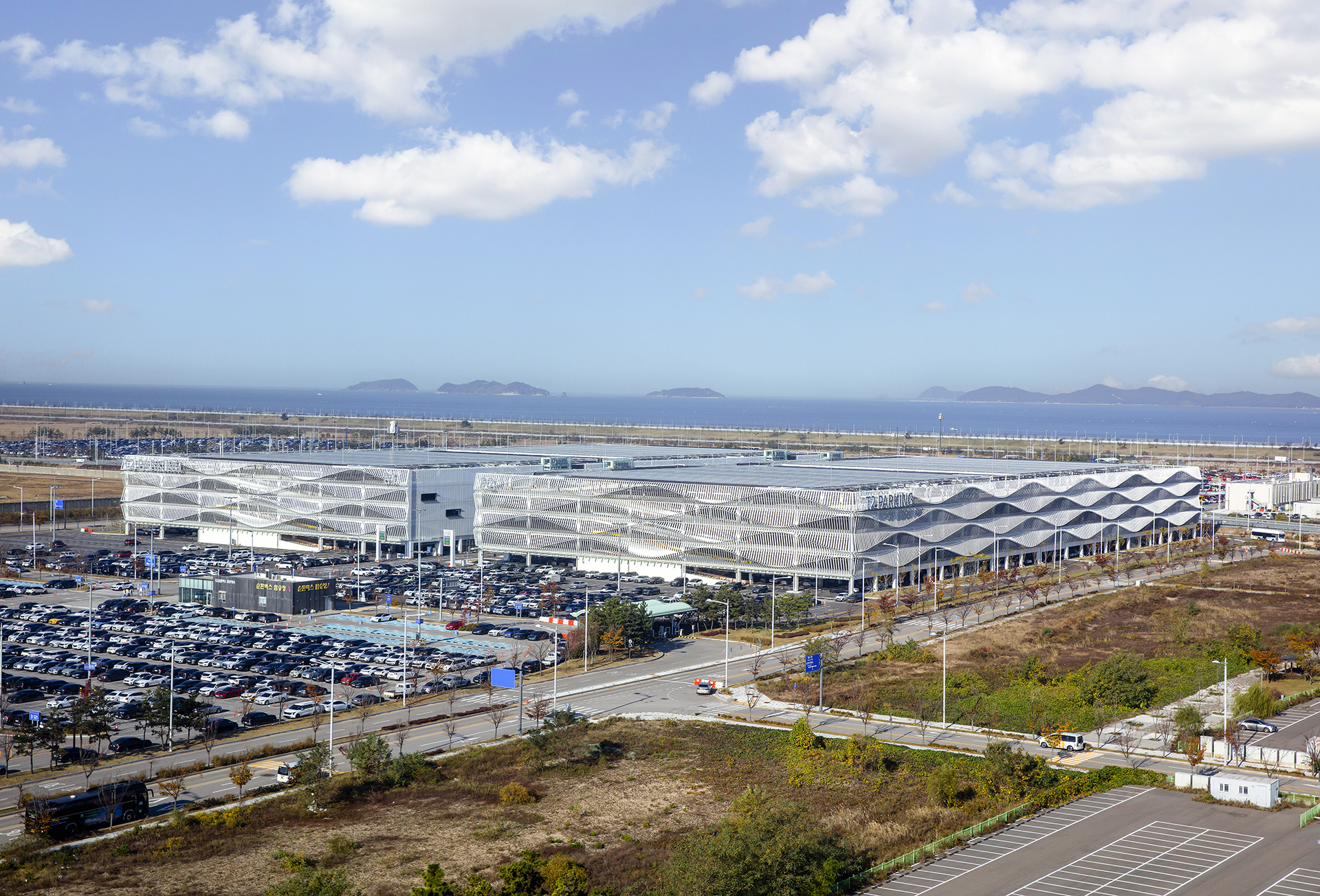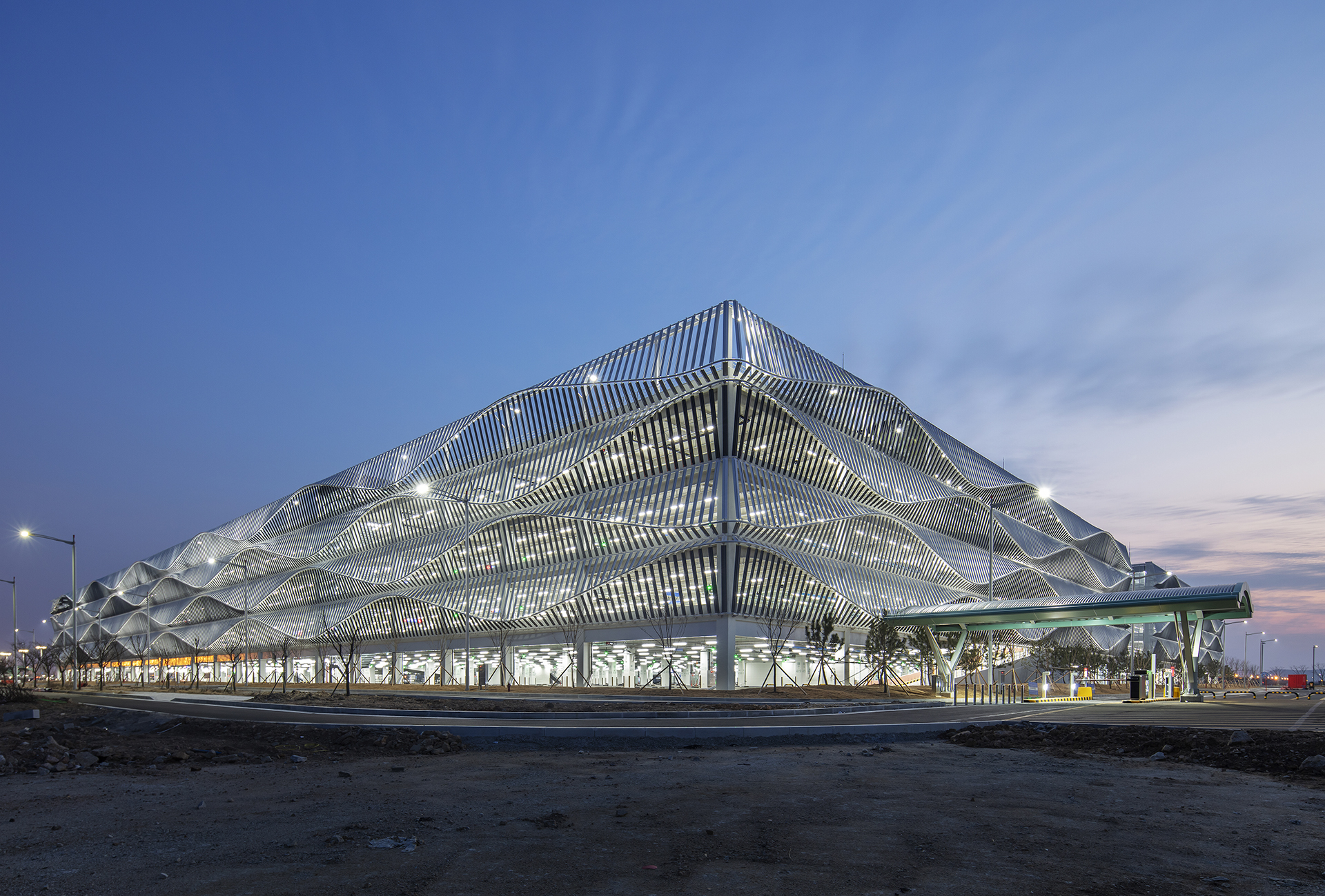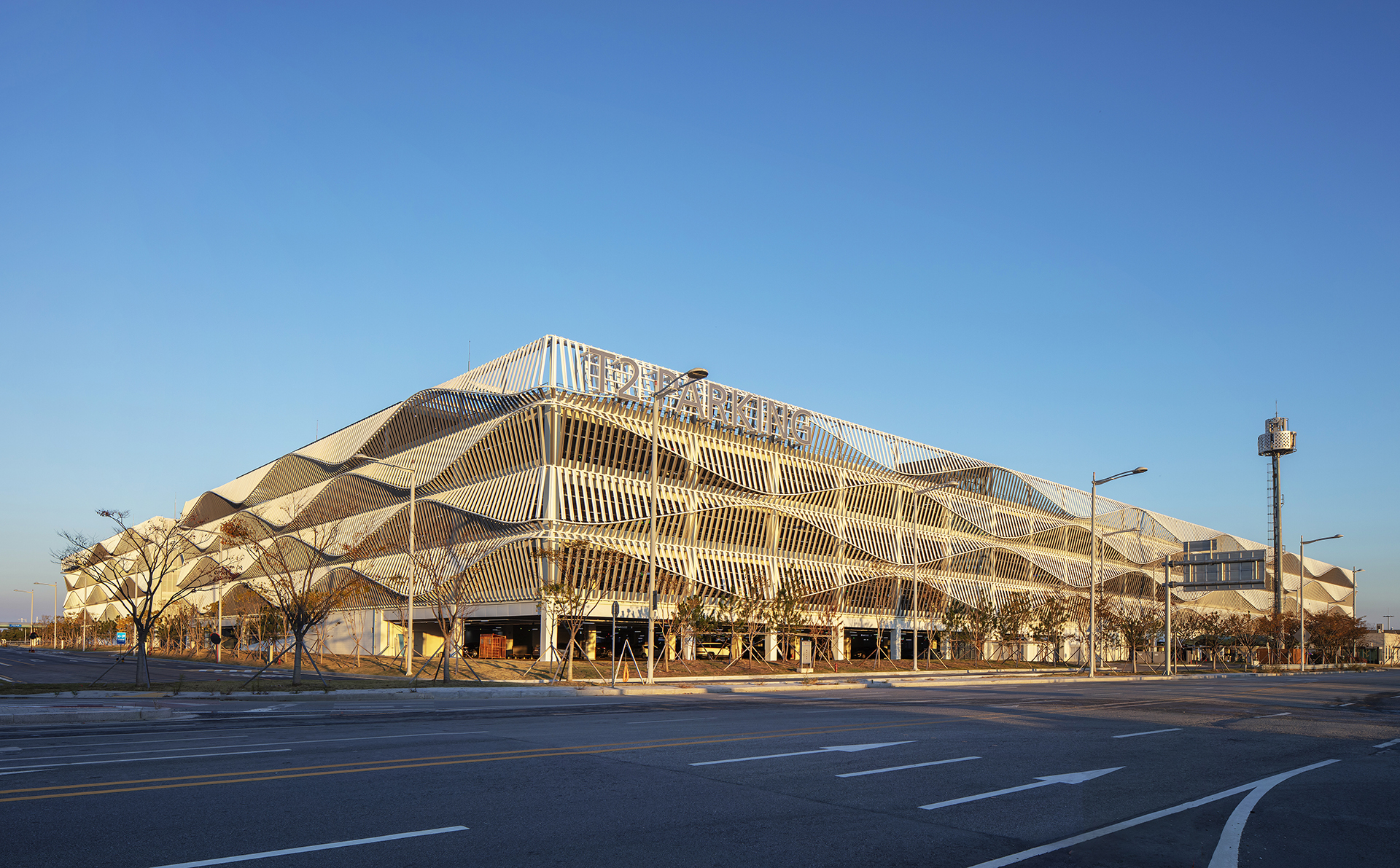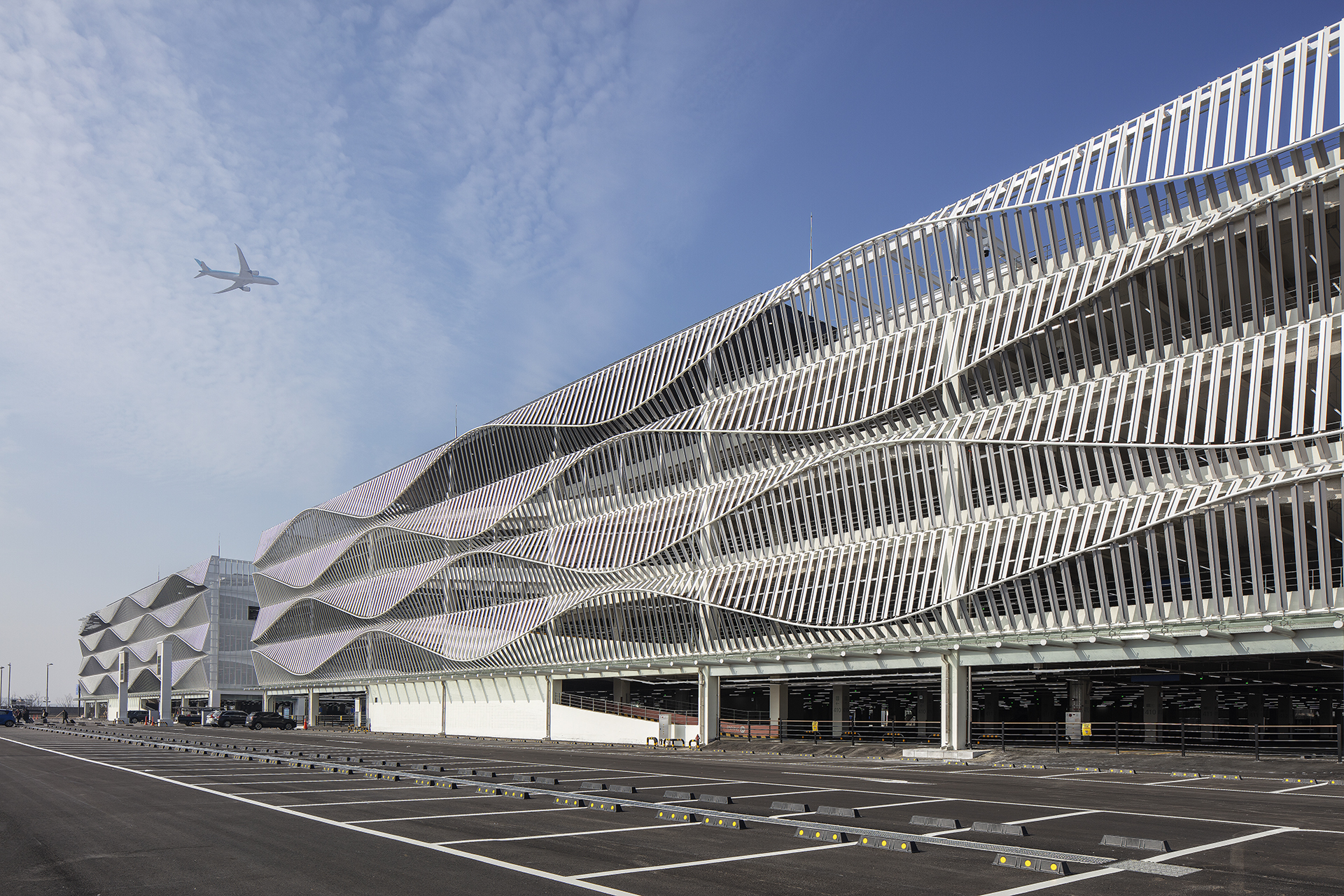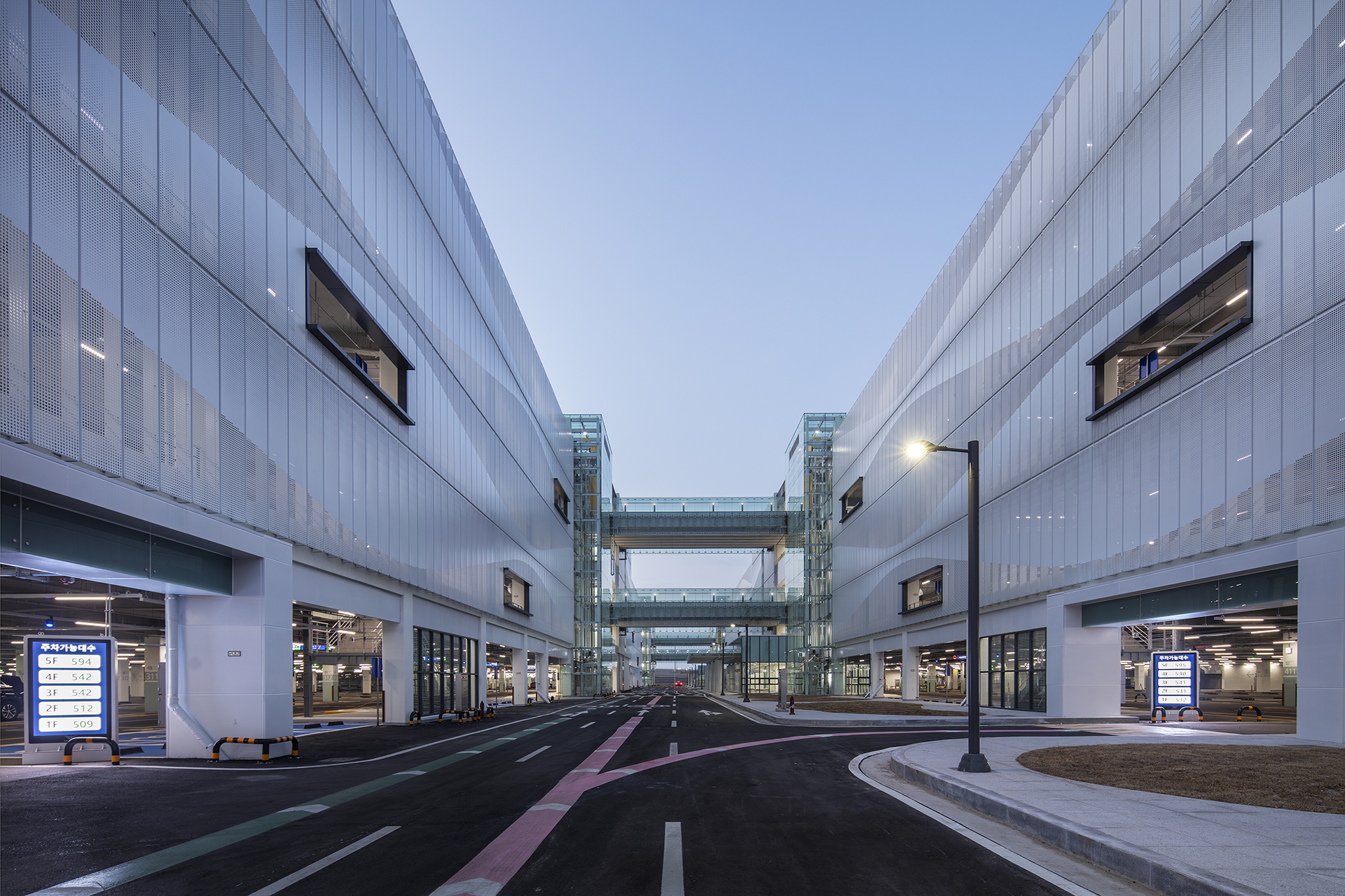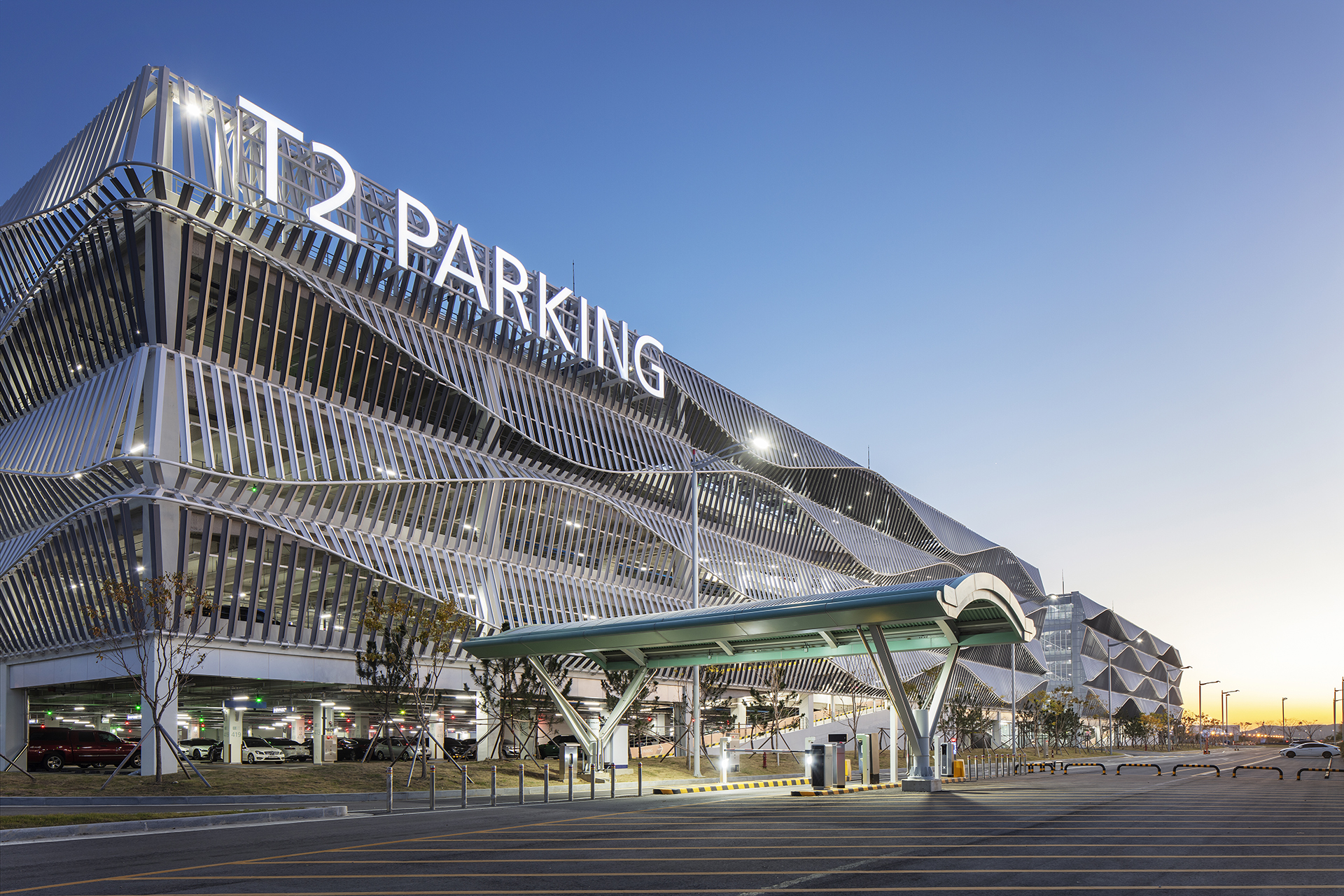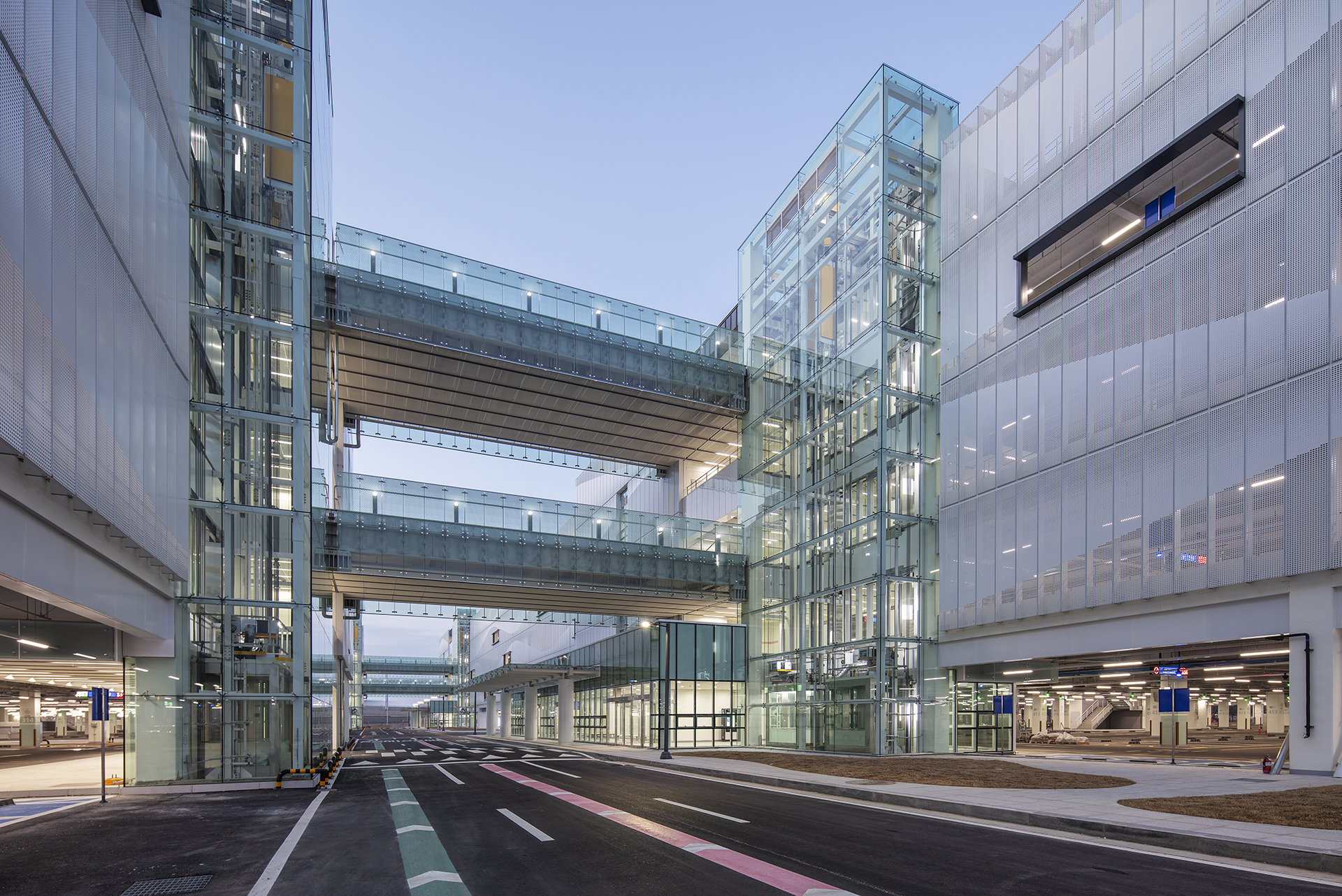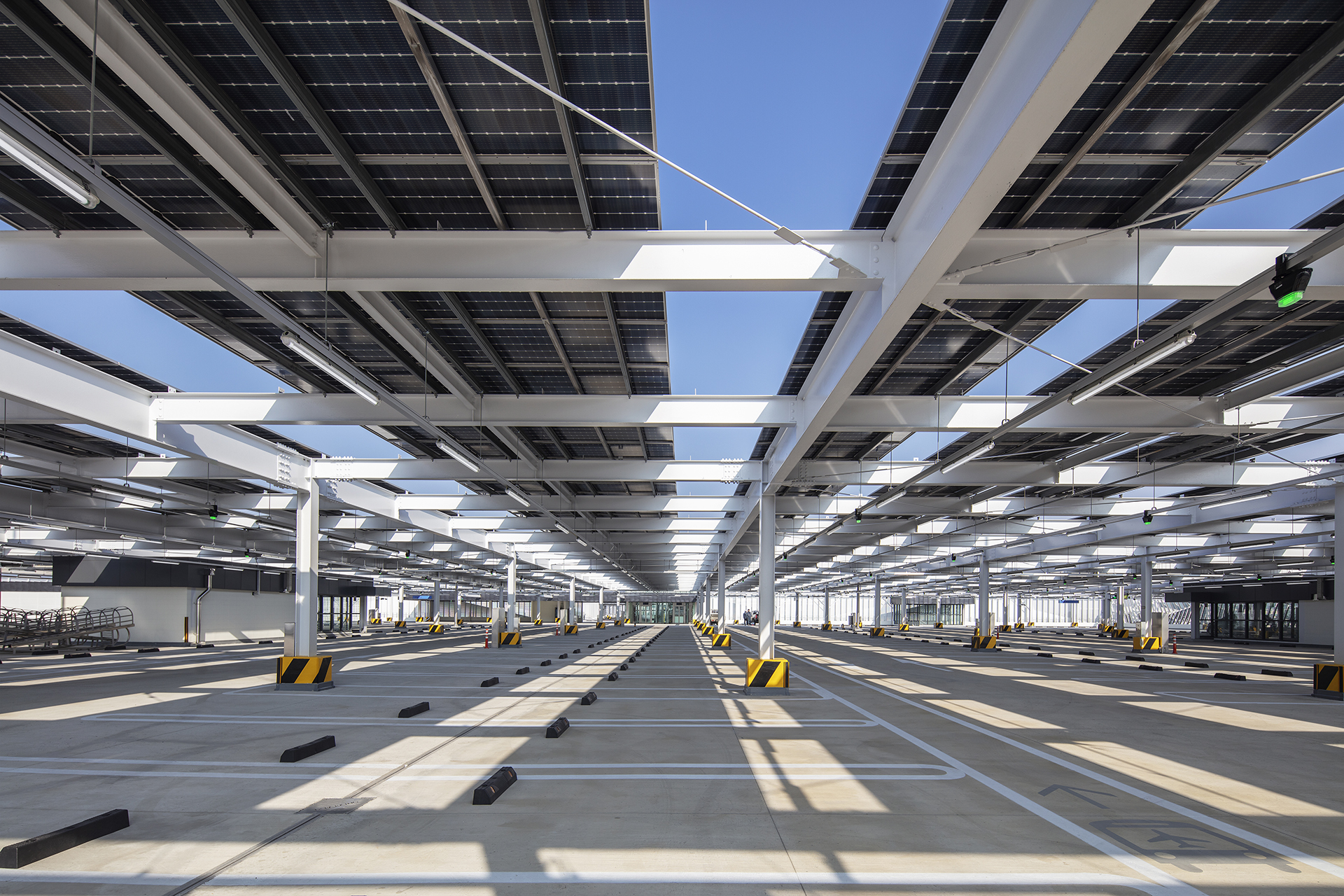S I T E M A P
Incheon, Korea
Incheon International Airport T2 Long-Term Parking Building
Incheon, Korea
Incheon International Airport T2 Long-Term Parking Building
Design
- Introduction
- The construction project for the T2 Long-Term Parking Building at Incheon International Airport is part of the airport's phase 4 expansion plan, which aims to address the future increase in air traffic demand. This project, along with the expansion of Terminal 2 and the construction of the 4th runway, was initiated to meet the growing need for parking facilities. Located approximately 3.8 km from Terminal 2, the T2 Long-Term Parking Building can accommodate a total of 6,448 vehicles, making it the largest single long-term parking building in Asia at the time of its design. The building includes parking spaces for 56 electric vehicles and 50 vans, and features solar power generation facilities on its roof, making it an eco-friendly parking building. The exterior design of the T2 Long-Term Parking Building is inspired by the 'Korean mountain landscape' depicted in traditional Korean paintings. The main exterior materials were aluminum louvers in a three-dimensional wave curve shape, considering both shading and ventilation functions. The color scheme was designed to evoke the feel of an ink wash painting, using parameters of light and shadow to reinterpret the techniques of traditional Korean landscape painting in a modern way.Beyond its primary function as a parking facility, the T2 Parking Buidling at Incheon International Airport serves as a spatial memory device that imprints a Korean image on passengers. Through the integration of traditional and modern technologies, the T2 Long-Term Parking Building has demonstrated its innovative design, which will make buidling a symbolic structure that promotes Korea's image to the world. Furthermore, it will play a central role in the expansion of Incheon International Airport, which has been ranked first in the world airport service evaluation for 12 consecutive years, and in the establishment of sustainable transportation infrastructure, ensuring its pivotal role in future airport operations






